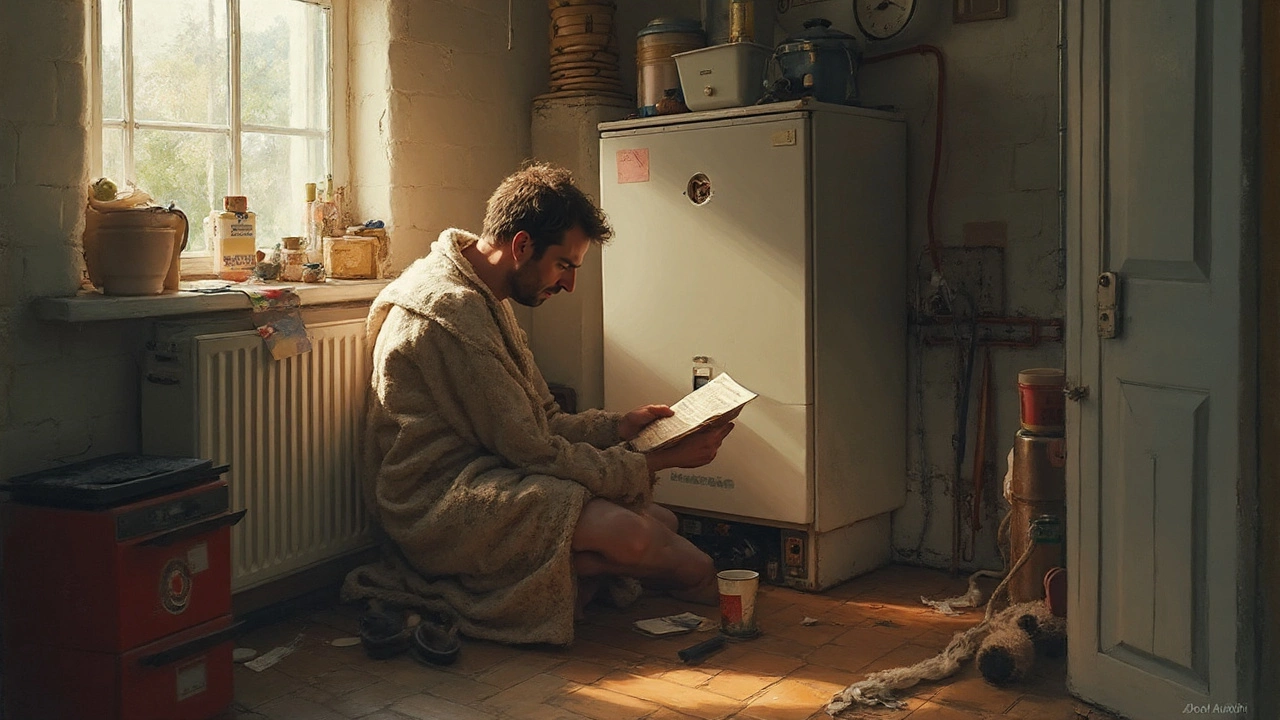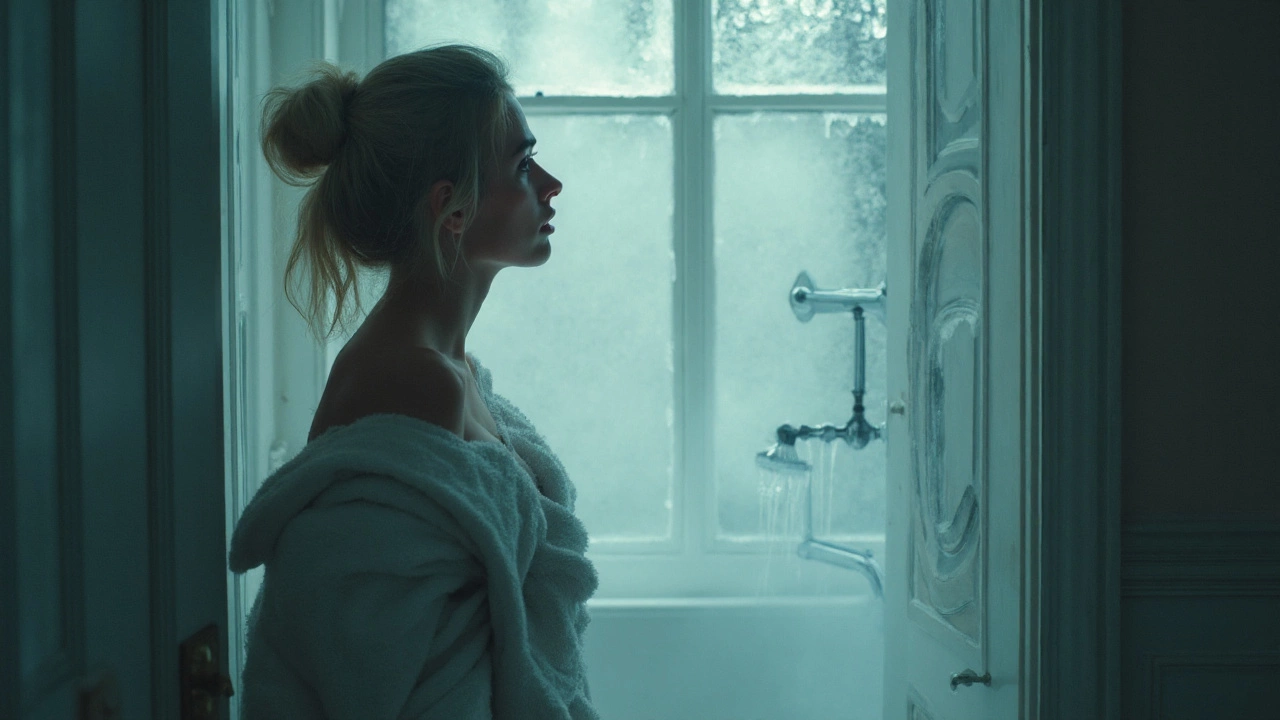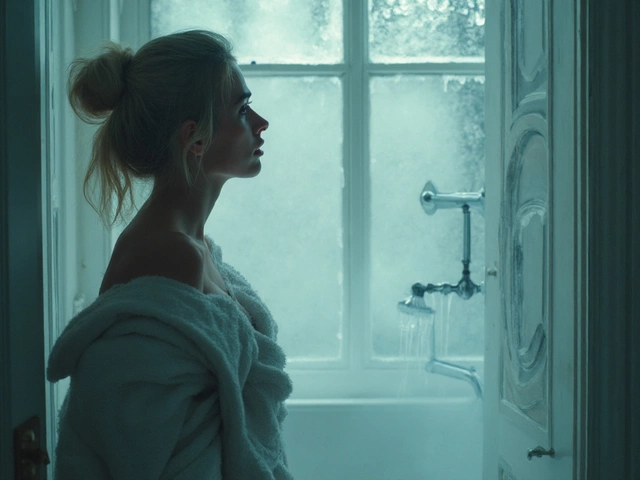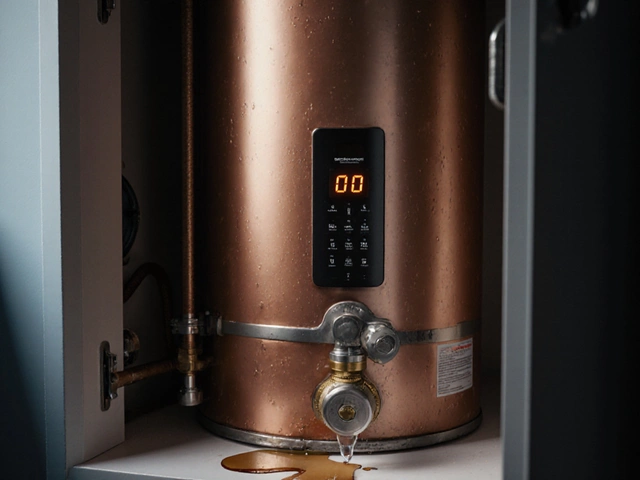Your morning starts with a nice, steamy shower... or at least, that’s the dream. You crank the tap, wait for the warmth, and you’re hit with an icy blast that makes polar bears shiver. What’s going on here? Why, after years of loyal service, is your hot water suddenly running cold? This problem hits when you least expect it, often right before work or as you’re prepping your evening bath, and it can send even the calmest among us spiraling. There’s no single answer—hot water turning cold can be anything from a quick fix to a full-blown breakdown—but knowing where to look first can save stress and, frankly, money.
Common Culprits: Why Your Hot Water Runs Out
Start with the classics. In almost half the cases, the issue traces back to your water heater, but that’s not the whole story. Electric and gas systems can each fail in their own special way, but certain problems pop up no matter the setup. One biggie is the thermostat. If you notice your water turning warm, then cold, with no pattern, this tiny device could be misreading temperatures. Home water heater thermostats sometimes slip out of calibration, leading to lukewarm water that never hits your ideal setting. A simple twist of the dial or, for the bold, a quick replacement can get things back on track.
But thermostats have rivals for the blame. Sediment build-up, especially in hard water areas, loves to sneak in. Over time, it clogs up gas burners or heats electric elements less efficiently. Instead of heating water, your system fights a gritty layer at the bottom of the tank. You’ll know sediment is the villain when your water warms up slowly or runs out fast. Flush the tank—a messy, but doable, task for DIY fans. If you’re not sure how, most manufacturers have step-by-step guides online, or you can search for your model on YouTube for a trusty tutorial.
Check your pilot light if you have a gas system. Sounds simple, but hundreds of people call for service every week only to discover that the flame’s gone out. Storms, drafts, or a faulty thermocouple (that little sensor that tells the gas valve when it’s safe to turn on) are the usual suspects. Relighting is easy with most modern tanks; just be careful if you smell gas, and if that pilot won’t stay on, a new thermocouple is cheap and quick to fit.
Lastly, don’t discount the basics. Some hot water woes trace back to a tripped breaker, blown fuse, or even water valves turned off for repairs that never got reopened. These little things take seconds to check but often get overlooked, especially if you’re already frustrated and shivering.
Boiler and Plumbing Issues: When the Problem Goes Deeper
If you’ve checked the heater, and nothing obvious has cropped up, shift focus to your home’s plumbing and boiler. Combination boilers (combis) are now common in the UK and other parts of Europe, and they aren’t immune to weird quirks. Low water pressure often causes hot water to cut out or run cold in combi setups. Maybe the pressure gauge’s needle isn’t hitting that “sweet spot” between 1 and 2 bars. Topping up is usually simple—flip a filling loop or follow your instruction manual—but if pressure drops again, you could have a leak hiding in the system. Leaks, especially under floors, can take months to show visible signs.
A stuck diverter valve loves to mess with people. This little device sends hot water to the radiators or taps, depending on what you need. If it sticks slightly, you might get lukewarm or freezing water even though the boiler looks like it’s chugging along. When heating works but hot water doesn’t (or vice versa), suspect the diverter valve. Some people thump their boiler in frustration and get a temporary fix. It’s better to have a pro swap the valve out for good, but at least you’ll know exactly what’s up.
Strange noises—gurgles, bangs, weird rattles from your pipes—often mean trapped air or, again, sediment. Air locks can stop hot water from traveling where it should, making parts of your system run cold. Simple fixes exist, like bleeding radiators or opening special valves, but systems differ, so don’t go opening things blindly. Heating forums are full of stories from folks who thought they’d fixed the problem but ended up with water in their hair. If in doubt, call a proper engineer.
Older properties come with their own headaches. That charming Victorian home on the corner? It probably has aging pipes full of debris. Corrosion narrows the passage for hot water, causing unpredictable showers. Re-piping costs big money, but regular checks and local fixes—like replacing specific pipes—can buy you time. Modern plastic alternatives last longer and suffer less from buildup and freezing.
One offbeat tip: Check your shower’s mixer tap. Some modern designs actually mix in cold water by default to prevent scalds, but if the valve fails, you’ll still get cold water no matter how high you turn the heat. Newer mixer models can be swapped in fifteen minutes, so look up your make and model if the shower is the only thing running cold.

How to Diagnose: Targeted Tests Anyone Can Try
You don’t need to be a plumber to do some detective work on your own. Start by figuring out if the cold water problem affects every hot tap, or just one. If it’s just the kitchen but not the bathroom, you’re probably looking at a localised valve or tap issue. Still, if every tap drops cold, start with the heater or boiler.
Time how long it takes for hot water to turn cold. If you start with warmth and get lukewarm, then a blast of cold, that’s classic fuel or power issues for the heater. Take a second: Can you hear the water heater running? Some modern combi boilers are almost silent, but traditional tank heaters give a steady hum. If it’s totally quiet and the indicator light is off, check the fuseboard. Sometimes, even a loose wire can kill power to the heater without tripping all the lights in the house.
Try running cold water in the next tap over. If your hot water comes back after running cold water elsewhere, you might have cross-connection problems or balancing issues in the pipes. While rare, this happens more in homes that have had amateur plumbing over the years, sometimes after kitchen or bathroom refits.
If you have a tank, crack open the side panel and take a look at the thermostat. Turn it up. Does it “click”? If not, it might be dead. Electric elements are another spot to check—over time, they burn out just like old-fashioned stove coils.
Check your bills. A shockingly high water bill (with no signs of leaks under sinks or outside) can mean your hot water tank is leaking from the bottom, which both ruins efficiency and risks flooding. Tankless heaters have their quirks—clogged heat exchangers, for instance, or limescale that builds up and chokes flow. They’re more sensitive to pressure changes, so if you’ve just had plumbing work or shut off the mains, bleeding the lines may solve a surging cold water problem.
Record any error messages or blinking lights from your boiler. Most modern systems have digital readouts that hint at what’s wrong. Your user manual translates the blinks or codes. If you’ve lost it, just Google your boiler brand and the error code. People post answers for almost every model online, so you’re rarely stuck in the dark for long.
- Is the cold limited to one room? Check for faulty faucets and shut-off valves.
- Does it go cold after a few minutes? You’re probably facing a tank running empty or a burnt-out element.
- Whole house cold? Head straight to your water heater, boiler, or fuseboard.
- Are you hearing hissing, gurgling, or popping? That’s either air in the pipes or sediment baking on your heating elements.
- Water pressure drops when you turn on a hot tap? You’re probably looking at pressure problems or a failing boiler pump.
Quick Fixes and Smart Prevention: Stay Ahead of Cold Showers
Now for the fixes. If sediment or hard water buildup is the culprit, flush your heater every year, especially if your area has high mineral content. Some folks swear by water softeners; others just set a calendar alert before winter. For tankless systems (the slim models that hang on walls), running a descaling agent through once a year keeps everything clean. Many modern heaters come with easy-flush valves, but older ones need a little more elbow grease.
Replace thermostats every 5-10 years, even if they don’t seem dead. They’re cheap and simple but make a world of difference. Learn where your heater’s reset switch is—sometimes, a power surge just trips it for no reason. Swap out old shower mixer valves for thermostatic models so every shower feels just right, no matter what else is running in the house.
Consider insulation, especially if pipes pass through cold basements, garages, or exterior walls. Foam sleeves cost next to nothing and can stop heat loss in rooms where it matters most. If you travel a lot or leave your home empty, shut the water off and drain your system during deep freezes—burst pipes aren’t just a hot water problem, but they’ll kill every tap in the place.
If you need a pro, choose one with great local reviews—word of mouth trumps slick ads every time. Plumbing and heating technicians say the majority of their emergency calls are either preventable or due to skipped yearly checks. Make it a habit: a quick look in the tank, a once-over of pipes, and a glance at pressure levels are often enough.
Here’s a strange one: Some hot water tanks develop “stratification,” where hot water floats on top and cold stays below thanks to a busted dip tube. If your showers run hot for thirty seconds and then ice-cold, it’s worth investigating. New dip tubes cost a few pounds and take half an hour for a confident DIYer to fit.
No matter which fix works for you, remember that hot water systems mix scalding temperatures, electricity, and sometimes gas, so respect the risk. Turn off power before poking around, and never ignore a gas smell—full stop. The skills you pick up chasing down cold water pay off not just in comfort, but in the confidence you know what’s going on behind your walls. Cold showers might wake you up, but nothing beats the feeling of solving the problem yourself.



